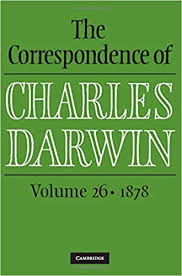Rosemary Hill at the LRB:
 The mood of the 1850s and 1860s was vigorous. Muscularity, ‘reality’ and ‘go’ were the admired qualities in art, in science and in life. Problems were there to be solved. Railway companies driving cuttings through the landscape split open dramatic rock strata. Geology and fossil-hunting were crazes, seaside holidaymakers collected shells and fished in rock pools. The world was immanent with new realms of knowledge, and as the meaning of ‘evolution’ shifted towards what was soon called Darwinism, the older meaning still haunted it. From his home in Biddulph Grange in Staffordshire, James Bateman corresponded with Darwin in the course of constructing his Geological Gallery, which opened to the public in 1862. In it the phases of biblical creation were illustrated with geological specimens and fossils in bays labelled ‘Day One’, ‘Day Two’ etc. Neither Bateman nor many of his contemporaries believed in the literal truth of Genesis, but this metaphorical account of ‘development’ as the slow unfolding of God’s creation could hold together science and religion. The churches of the High Victorian years glowed and bristled with inset marble and polished minerals.
The mood of the 1850s and 1860s was vigorous. Muscularity, ‘reality’ and ‘go’ were the admired qualities in art, in science and in life. Problems were there to be solved. Railway companies driving cuttings through the landscape split open dramatic rock strata. Geology and fossil-hunting were crazes, seaside holidaymakers collected shells and fished in rock pools. The world was immanent with new realms of knowledge, and as the meaning of ‘evolution’ shifted towards what was soon called Darwinism, the older meaning still haunted it. From his home in Biddulph Grange in Staffordshire, James Bateman corresponded with Darwin in the course of constructing his Geological Gallery, which opened to the public in 1862. In it the phases of biblical creation were illustrated with geological specimens and fossils in bays labelled ‘Day One’, ‘Day Two’ etc. Neither Bateman nor many of his contemporaries believed in the literal truth of Genesis, but this metaphorical account of ‘development’ as the slow unfolding of God’s creation could hold together science and religion. The churches of the High Victorian years glowed and bristled with inset marble and polished minerals.
more here.
